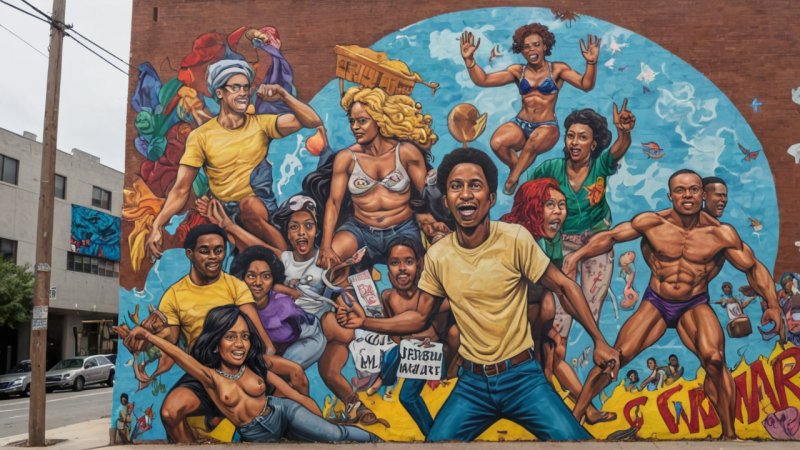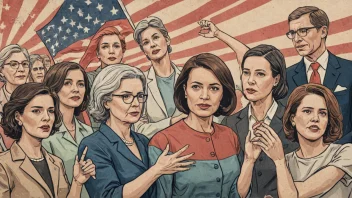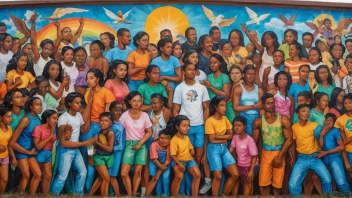Visual arts have played a pivotal role in shaping social movements throughout history. From the striking imagery of protest art to the sharp wit of political cartoons, these forms of expression have not only captured the spirit of their times but have also influenced public opinion and mobilized communities for change. This article aims to compare protest art and political cartoons, examining their unique attributes, advantages, disadvantages, and overall impact on social movements.
Understanding Protest Art
Protest art encompasses a wide range of artistic expressions, including murals, installations, and performance art, created to convey a message of dissent or advocacy. This genre often emerges in response to social injustices and aims to inspire action among viewers.
Pros of Protest Art
- Emotional Engagement: Protest art often evokes strong emotional responses, allowing viewers to connect deeply with the issues being addressed.
- Visual Impact: The striking visuals can attract attention and provoke thought, making complex issues more accessible to the general public.
- Community Involvement: Many protest art projects encourage community participation, fostering a sense of solidarity and collective action.
Cons of Protest Art
- Interpretation Variability: The meaning of protest art can be subjective, leading to varying interpretations that may dilute the intended message.
- Accessibility Issues: Some forms of protest art may not reach wider audiences due to their location or the specific contexts in which they are displayed.
- Temporary Nature: Many protest art pieces are ephemeral, existing only for a short time, which can limit their long-term impact.
The Role of Political Cartoons
Political cartoons use satire and humor to comment on political events and societal issues. These illustrations often feature caricatures and exaggerated scenarios, making complex topics more digestible and engaging for the audience.
Pros of Political Cartoons
- Quick Communication: Political cartoons convey messages rapidly, often summarizing complex issues in a single image or caption.
- Humor as a Tool: The use of satire can disarm audiences, making them more receptive to challenging ideas.
- Widespread Distribution: Political cartoons can be easily shared through newspapers, magazines, and online platforms, increasing their reach and impact.
Cons of Political Cartoons
- Oversimplification: The brevity of political cartoons can lead to oversimplification of complex issues, potentially misinforming audiences.
- Potential for Misinterpretation: Satirical content may be misunderstood, leading to unintended consequences or backlash.
- Limited Depth: Political cartoons often focus on current events, which can limit their exploration of deeper systemic issues.
Comparative Analysis of Impact
Both protest art and political cartoons serve as powerful tools for social commentary and advocacy, yet they operate in distinct ways that affect their influence on social movements.
Audience Engagement
Protest art tends to engage audiences on a visceral level, often prompting viewers to reflect on their own experiences and emotions related to social issues. In contrast, political cartoons engage audiences through humor and satire, making complex ideas more approachable and spark discussions.
Longevity and Legacy
While protest art can create lasting physical landmarks that continue to inspire future generations, political cartoons often have a shorter lifespan, tied closely to the news cycle. However, iconic political cartoons can achieve legendary status and be referenced long after their publication.
Accessibility and Reach
Protest art may be limited by its physical presence, often found in specific locations or communities. Political cartoons, on the other hand, can be disseminated widely through various media, making them more accessible to a broader audience.
Conclusion
In conclusion, both protest art and political cartoons play essential roles in social movements, each with its own strengths and weaknesses. Protest art engages audiences emotionally and fosters community involvement, while political cartoons provide quick, humorous commentary that can reach a wide audience. Ultimately, the most effective approach may lie in a combination of both forms, harnessing the emotional power of protest art alongside the accessible wit of political cartoons to inspire change and mobilize communities.






